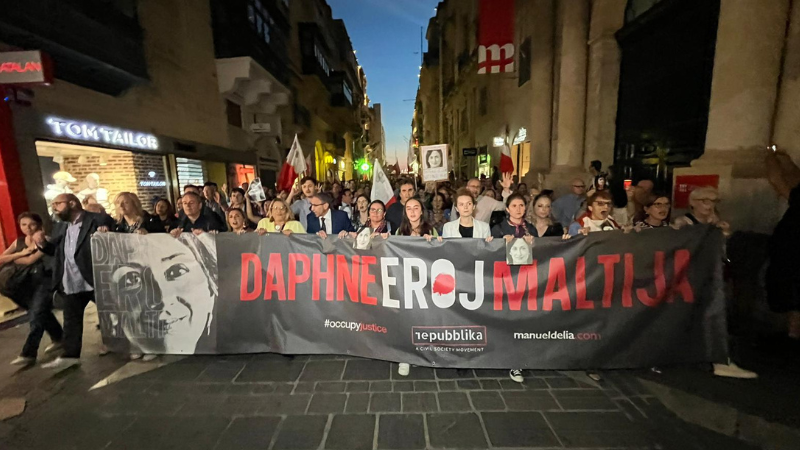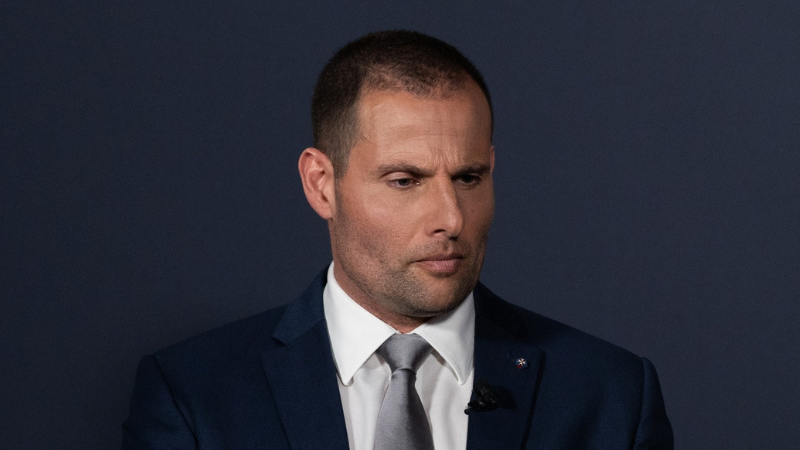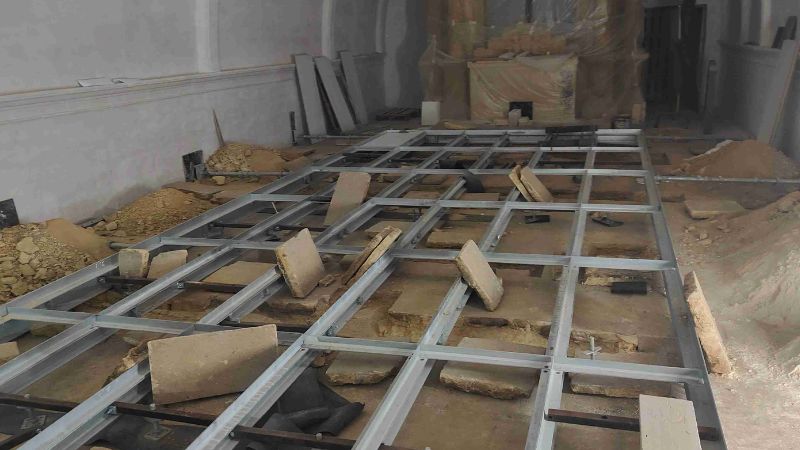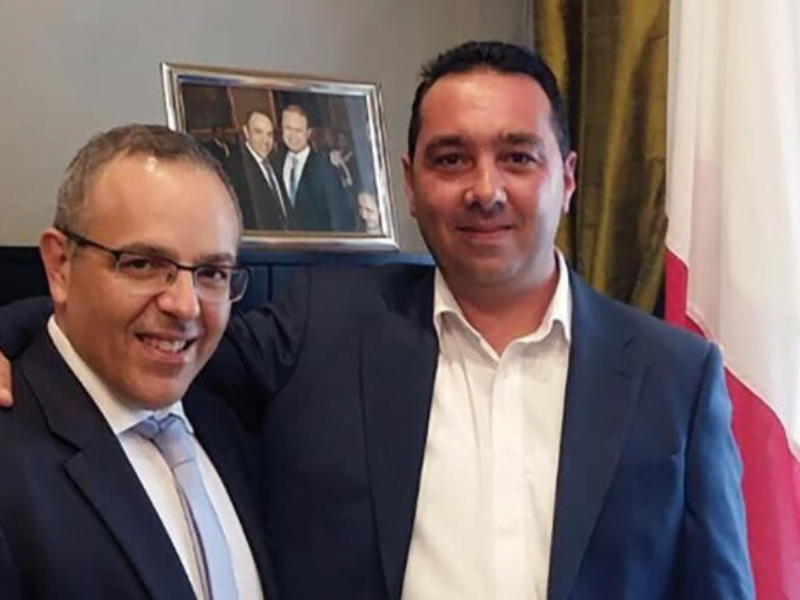The fight for “full justice” for the assassination of Maltese journalist Daphne Caruana Galizia over five years ago continues, the International Press Institute said on Friday, “as concrete reforms to protect journalists remain elusive due to the lack of political will of the Maltese authorities”.
The IPI made the statement on Friday when it published a yearly roundup of the number of journalists and media workers who were killed in connection with their professions in 2022.
According to the IPI’s data, 2022 witnessed a “devastating decline in journalists’ safety”, the International Press Institute said on Friday, citing its data that 66 journalists and media workers were killed in connection with their profession. The 2022 figure represents a steep increase from the total of 45 journalists killed in 2021, according to the IPI’s annual report published on Friday.
In the “rare cases” where there has been progress toward accountability, full justice has not yet been secured. The Caruana Galizia case, the IPI said, was one in point.
The IPI noted how her two hitmen were sentenced to 40 years’ imprisonment in October, but “five years after her murder, legal proceedings are still pending against the alleged mastermind, Yorgen Fenech, and two men who allegedly supplied the bomb”.
In many cases, investigations into journalists’ killings stall due to a lack of political will, as the truth might implicate those in power or bring corrupt systems to a fall, the IPI said, adding that “impunity has a chilling effect on press freedom, weakening democracy, preventing journalists from reporting on certain topics, and encouraging more violence towards the media”.
According to IPI Executive Director Frane Maroević, “It is outrageous that journalists are killed because they are bringing us information that someone wants to hide.
“It is unacceptable that families are losing their loved ones and that the public is denied information simply because someone wants to hide the information, because someone is killing the messengers.
“Every single one of these 66 killings is not only an immense tragedy for their loved ones, their friends and colleagues, each killing is an attack on global press freedom.”
Globally, the IPI said that spiralling attacks against journalists in Mexico as well as Russia’s full-scale invasion of Ukraine were leading factors behind the rise in journalist killings. 14 journalists were killed in Mexico in 2022, the deadliest year for the country’s media since 2017.
Meanwhile, eight journalists were killed covering Russia’s war in Ukraine, including both Ukrainian and foreign reporters.
This year saw other shocking attacks on journalists, such as the fatal shooting of Al Jazeera journalist Shireen Abu Akleh by Israeli forces while reporting on an Israeli raid in the West Bank in May.
Latin America and the Caribbean was the deadliest region for journalists in 2022. This year marked one of the darkest periods for the Mexican press in recent memory. With 14 documented killings, Mexico remained the deadliest country in the world for journalists, even compared to active war zones such as Ukraine.
In most of these cases, journalists were targeted deliberately due to their work. Journalists working in remoter regions of the country were in particular danger. Many of the killed journalists reported on corruption and organized crime and some of them received serious threats for their reporting.
In addition to Mexico, an alarming number of journalists were killed in Haiti, where a total of eight journalists lost their lives due to their profession. Haiti has recently suffered from political unrest and rising gang violence. Young Haitian journalists Frantzsen Charles and Tayson Lartigue were shot to death by alleged gang members, and journalists Amady John Wesley and Wilguens Louissaint were burned alive by gang members on the outskirts of Haiti’s capital Port–au-Prince.
Since Russia started its full-scale invasion of Ukraine in February, IPI has recorded a total of eight journalists and media workers, including Ukrainian and foreign reporters, who are confirmed to have been killed in the line of duty or because of their journalistic profession. There is evidence that up to four more Ukrainian journalists and media workers may have been killed by Russian troops in connection to their profession, though these cases have not yet been verified, and they are not recorded on IPI’s Database of Killed Journalists.
“This year has again demonstrated the critical and dangerous role of journalists covering wars. Without them, we would only hear from the military,” Maroević said. “IPI honours the memory of all the journalists who lost their lives reporting on the ongoing Russian invasion of Ukraine.”
Although the number of killings in Asia and the Pacific declined somewhat – to 11 cases compared to 18 cases recorded in 2021 – the situation in the Philippines took a dark turn with a total of five radio broadcasters killed in 2022. Independent journalists in the Philippines work in a climate of intense hostility and violence, following years of attacks on the press by former president Rodrigo Duterte.
The Middle East and North Africa saw a slight increase compared to last year, with five recorded killings. There were three documented killings in sub-Saharan Africa, including dissident Pakistani journalist Arshad Sharif, who was shot dead in unclear circumstances in Kenya.













Kudos to you all at the Shift for your relentless pursuit of the unvarnished truth! May more of the PL toadies see it in 2023.
GRAZZI lil TheShiftNews ghall-hidma imprezzabbli taghkom. Nawguralkom 2023 mimlija aktar successi u kisbiet ghall-gurnaliżmu Malti.
Unfortunately, we are one of the countries in the list who witnessed one of the most brutal killings of all times, iconic to mafia style, a killing of a person who happened to be a mother of three, a wife and a free thinker.
Malta is listed alongside many other notorious countries, perhaps for a reason, but also for a cruel reality which is hard to accept when such bad publicity hits one own’s country.